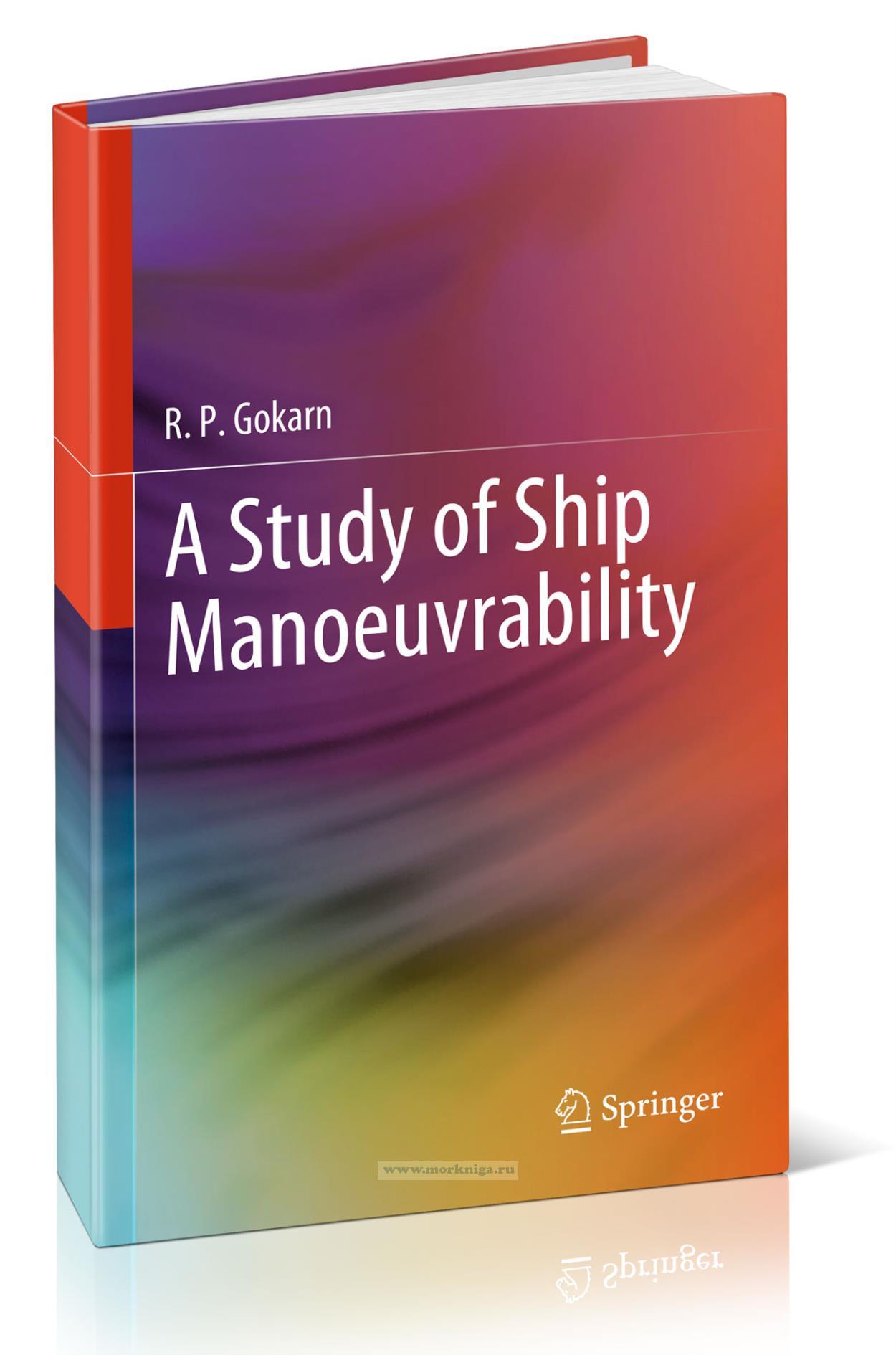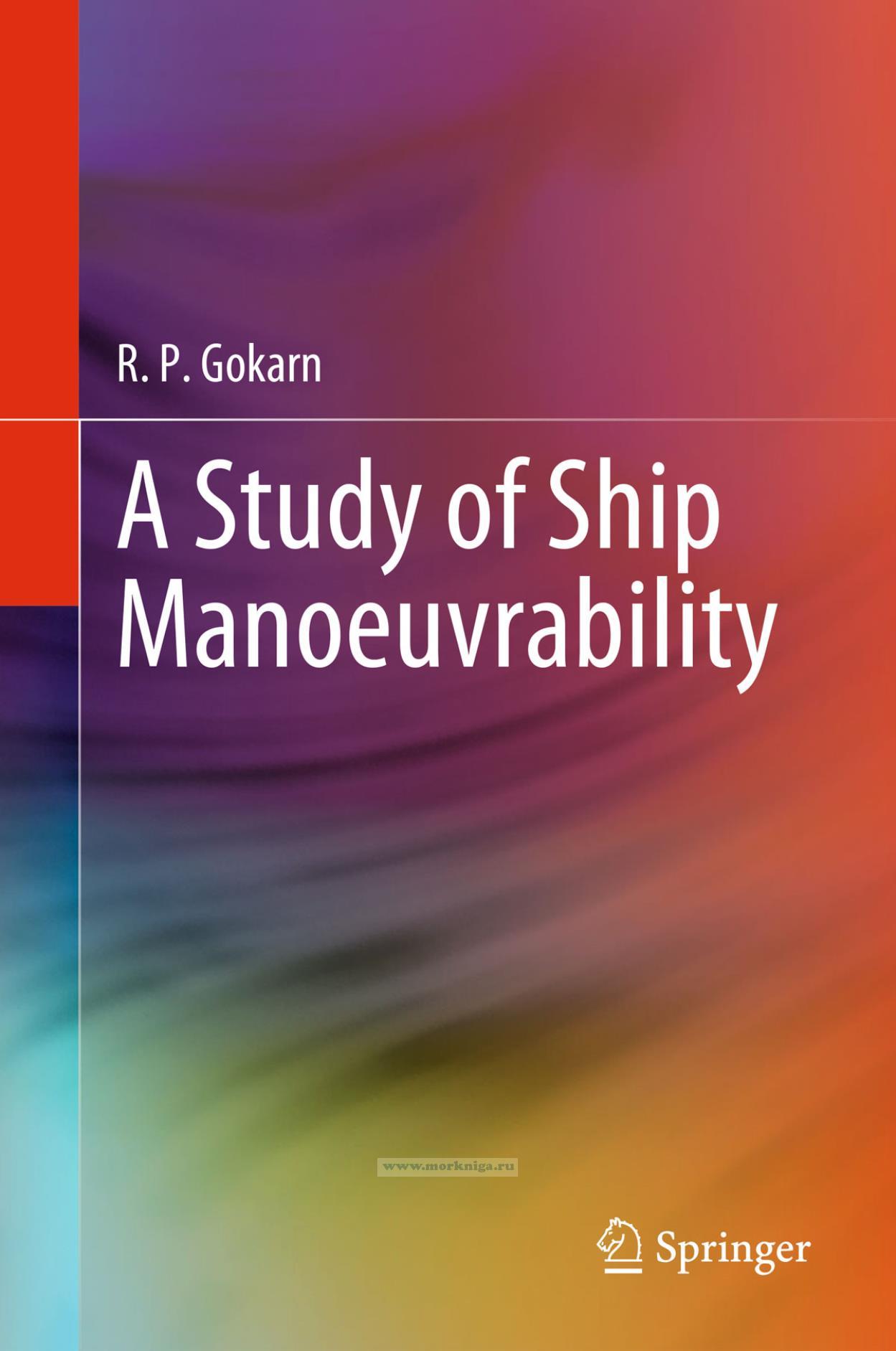Сб с 10 до 16
A Study of Ship Manoeuvrability/Исследование маневренности корабля
Книга на английском языке
This book presents various aspects of Ship Manoeuvrability in a form that can be understood without undue effort. Beginning with the equations of motion, the book describes the main manoeuvring mathematical models with their application in the numerical simulation of various manoeuvres. The other topics covered in the book range from manoeuvring model tests and full-scale trials through rudder hydrodynamics and design to manoeuvring standards and guidelines. This book also discusses ship autopilots and dynamic positioning. Finally, it provides a description of unconventional rudders and propulsion devices used for manoeuvring. The book has more than 180 figures to explain various concepts and 40 exercises with partial solutions to confirm that the reader has understood the subject. The book also includes recent developments in the subject and can be a valuable reference for beginners, researchers, and professionals interested in the field.
Contents
1 General Introduction
1.1 Elements of Ship Manoeuvrability
1.2 Direction Control System
1.3 Manoeuvrability Requirements
2 Equations of Motion
2.1 Basic Considerations
2.2 Equations for Axes Fixed to the Earth
2.3 Equations for Axes Moving with the Ship
2.4 Forces and Moments
2.5 Non-linear Equations
2.6 Linearised Equations of Motion
2.7 Linear Hydrodynamic Derivatives
2.8 Equations of Motion for an Arbitrary Origin
2.9 Non-dimensional Equations
2.10 Other Mathematical Models of Ship Manoeuvring
References
3 Course Stability and Controllability
3.1 Types of Course Stability
3.2 Stability in Surge
3.3 Straight Line Stability
3.4 Directional Stability Manoeuvres
3.5 Controllability
References
4 Turning Ability
4.1 Turning Circle Manoeuvre
4.2 Phases of a Turning Circle Manoeuvre
4.3 Analytical Treatment
4.4 Heel While Turning
4.5 Speed Loss in a Turn
4.6 Rudder Location
Reference
5 Speed Changing
5.1 Importance of Speed Changing Manoeuvres
5.2 Equation of Motion
5.3 Additional Considerations
5.4 Stopping Manoeuvre
5.5 Collision Avoidance
References
6 Effects of Propellers and External Forces
6.1 Introduction
6.2 Yaw Moment Due to a Propeller
6.3 Effect of an External Force
6.4 A Ship Under Tow
References
7 Environmental Effects
7.1 Environmental Factors Affecting Manoeuvrability
7.2 Wind
7.3 Current
7.4 Waves
7.5 Shallow Water
7.6 Canals
7.7 Operation Close to Land
7.8 Interaction Between Ships
References
8 Manoeuvring Model Tests
8.1 Introduction
8.2 Free Model Tests
8.3 Steady Captive Model Tests
8.4 Oscillatory Captive Model Tests
8.5 Planar Motion Mechanism
8.6 Computerised Planar Motion Carriage
References
9 The Nomoto Model
9.1 Introduction
9.2 Derivation of the Nomoto Model
9.3 First Order Nomoto Model
9.4 Determination of Nomoto Indices
9.5 Applications
9.6 Comments on the Nomoto Model
References
4.6 Rudder Location
Reference
5 Speed Changing
5.1 Importance of Speed Changing Manoeuvres
5.2 Equation of Motion
5.3 Additional Considerations
5.4 Stopping Manoeuvre
5.5 Collision Avoidance
References
6 Effects of Propellers and External Forces
6.1 Introduction
6.2 Yaw Moment Due to a Propeller
6.3 Effect of an External Force
6.4 A Ship Under Tow
References
7 Environmental Effects
7.1 Environmental Factors Affecting Manoeuvrability
7.2 Wind
7.3 Current
7.4 Waves
7.5 Shallow Water
7.6 Canals
7.7 Operation Close to Land
7.8 Interaction Between Ships
References
8 Manoeuvring Model Tests
8.1 Introduction
8.2 Free Model Tests
8.3 Steady Captive Model Tests
8.4 Oscillatory Captive Model Tests
8.5 Planar Motion Mechanism
8.6 Computerised Planar Motion Carriage
References
9 The Nomoto Model
9.1 Introduction
9.2 Derivation of the Nomoto Model
9.3 First Order Nomoto Model
9.4 Determination of Nomoto Indices
9.5 Applications
9.6 Comments on the Nomoto Model
References
4.6 Rudder Location
Reference
5 Speed Changing
5.1 Importance of Speed Changing Manoeuvres
5.2 Equation of Motion
5.3 Additional Considerations
5.4 Stopping Manoeuvre
5.5 Collision Avoidance
References
6 Effects of Propellers and External Forces
6.1 Introduction
6.2 Yaw Moment Due to a Propeller
6.3 Effect of an External Force
6.4 A Ship Under Tow
References
7 Environmental Effects
7.1 Environmental Factors Affecting Manoeuvrability
7.2 Wind
7.3 Current
7.4 Waves
7.5 Shallow Water
7.6 Canals
7.7 Operation Close to Land
7.8 Interaction Between Ships
References
8 Manoeuvring Model Tests
8.1 Introduction
8.2 Free Model Tests
8.3 Steady Captive Model Tests
8.4 Oscillatory Captive Model Tests
8.5 Planar Motion Mechanism
8.6 Computerised Planar Motion Carriage
References
9 The Nomoto Model
9.1 Introduction
9.2 Derivation of the Nomoto Model
9.3 First Order Nomoto Model
9.4 Determination of Nomoto Indices
9.5 Applications
9.6 Comments on the Nomoto Model
References
10 The MMG Model
10.1 Background
10.2 Equations of Motion
10.3 Hull Hydrodynamic Forces and Moment
10.4 Propeller Forces and Moment
10.5 Rudder Forces and Moment
10.6 Model Experiments in the MMG Standard Method
10.7 Linearised Equations of Motion
10.8 Nomoto Indices from the MMG Equations
10.9 Yaw-Roll Coupling
References
11 Determination of Hydrodynamic Derivatives
11.1 Introduction
11.2 Added Mass and Inertia
11.3 Hull Hydrodynamic Derivatives
11.4 Rudder Derivatives
11.5 Hydrodynamic Derivatives of a Fixed Fin
11.6 Empirical Methods
11.7 System Identification
11.8 Computational Fluid Dynamics
References
12 Automatic Control and Dynamic Positioning
12.1 Ship Automatic Direction Control Systems
12.2 Basic Features of Ship Autopilots
12.3 Analysis of a Ship Autopilot
12.4 Automatic Control and the Nomoto Model
12.5 Modern Developments
12.6 Dynamic Positioning
12.7 Main Elements of a Dynamic Positioning System
12.8 Safety Requirements of Dynamic Positioning Systems
12.9 Dynamic Positioning Thruster Systems
References
13 Rudder Hydrodynamics
13.1 Introduction
13.2 Rudder Geometry
13.3 Rudder Forces and Moments
13.4 Types of Rudders
13.5 Hydrodynamic Characteristics of a Rudder in Uniform Flow
13.6 Effect of Rudder Geometry on Hydrodynamic Characteristics
13.7 Determination of Rudder Forces
13.8 Performance of a Rudder Fitted to a Ship
References
14 Ship Manoeuvring Standards and Guidelines
14.1 Manoeuvring Performance Requirements
14.2 IMO Standards of Ship Manoeuvrability
14.3 ABS Manoeuvrability Guide
14.4 Other Guidelines
References
15 Rudder Design and Other Design Considerations
15.1 Manoeuvrability and Ship Design
15.2 Rudder Design
15.3 Propulsion System and Manoeuvrability
15.4 Hull Form
15.5 Other Design Features
References
16 Manoeuvring Trials
16.1 Introduction
16.2 Conditions for Manoeuvring Trials
16.3 Trials Involving Definitive Manoeuvres
16.4 Other Manoeuvring Tests
16.5 Correction for Environmental Conditions
References
17 Unconventional Rudders
17.1 Introduction
17.2 Special Rudder Sections
17.3 Schilling Rudder
17.4 Pleuger Active Rudder
17.5 Rotating Cylinder Rudder
17.6 Flap Rudder
17.7 Twisted Leading Edge Rudder
17.8 Kitchen Rudder
17.9 Flanking Rudders
17.10 Vectwin Rudders
17.11 Gate Rudder
References
18 Lateral Thrust Units and Manoeuvring Propulsion Devices
18.1 Introduction
18.2 Lateral Thrust Units
18.3 Steering Nozzle Propellers
18.4 Azimuth Propellers
18.5 Waterjet Propulsion
18.6 Cycloidal Propellers
18.7 Special Features of Manoeuvring Propulsion Devices
References
Appendix A: Generalised Equations of Motion
Appendix B: Dimensional and Non-dimensional Hydrodynamic Derivatives
Appendix C: Two Other Manoeuvring Mathematical Models
Appendix D: Numerical Simulation Using the Abkowitz Model
Appendix E: Numerical Simulation Using the MMG Standard Model
Appendix F: Analysis of Experiments in the MMG Standard Model
Appendix G: Manoeuvring Stability of a Ship in a Steady Turn
Appendix H: Lewis Conformal Mapping Method
Appendix I: Rudder Hydrodynamic Characteristics—Additional Data
Appendix J: Empirical Estimation of Manoeuvring Performance
Appendix K: Miscellaneous Exercises
Appendix L: Unconventional Manoeuvring Devices—Exercises
Index

